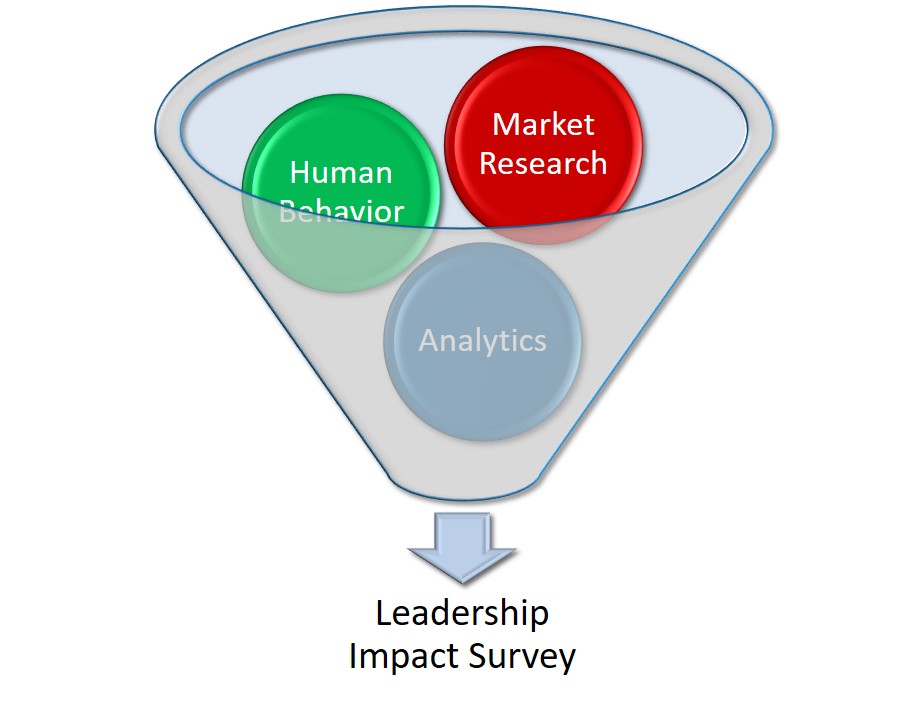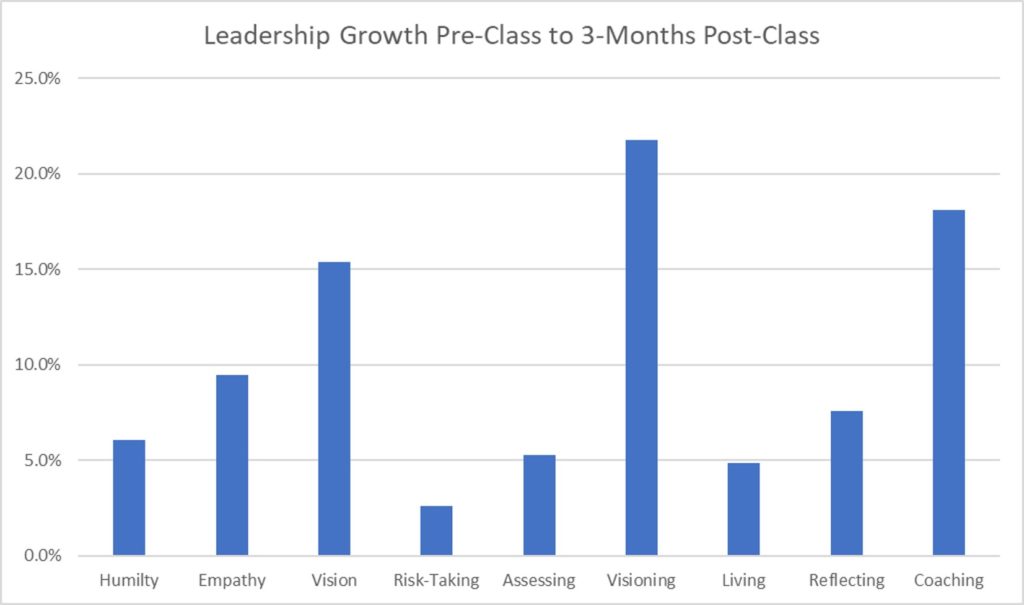Many believe that leadership improvement is not something that can be measured quantifiably. We have all listened to presentations by leadership experts that expound on how well their leadership training works without any proof to substantiate their claims. When asked about how they know it works, the answers typically fall into 2 categories, “We can tell” or the dreaded, “We believe it worked.” Neither of these are acceptable to an organization or an individual that has spent their time and money for the training. With the right tool, a well-designed leadership training program can easily be quantifiably measured.
Measuring leadership growth not only requires leadership development expertise, but also experience in the use and implementation of other disciplines, specifically, human behavior, market research and data analysis.
- Human behavior is the potential and expressed capacity (mentally, physically, and socially) of human individuals or groups to respond to internal and external stimuli throughout their life. It’s the psychology behind motivations and actions. It is needed to help determine what to measure in leadership development.
- Market research is the activity of gathering information about consumers’ needs and preferences. It is used to craft a well-design research instrument with easily understood and meaningful questions.
- Data analysis is the practice of deriving useful information from data to form actionable insights. The data must be summarized and presented to clearly communicate the most important variations and conclusions. It is needed to analyze the results and to create impactful visualizations.

Utilizing these disciplines, the proprietary Leadership Impact Survey (LIS) was developed to better quantify and monitor the results of leadership improvement training undertaken by individuals and organizations. It is completed through the use of a survey to measure 9-dimensions of leadership, which are:
- Humility
- Empathy
- Vision
- Risk-Taking
- Assessing
- Visioning
- Living
- Reflecting
- Coaching
These dimensions are summarized into 2 categories, the Potential for leadership (top 4) and the Practice of leadership (bottom 5).
Potential for Leadership
Leadership potential is determined by the innate leadership qualities a person possess which provides them with a higher leadership ceiling. Some of this can be improved upon with training, but a solid floor must exist for the leader to reach their full potential.
The four innate qualities of humility, empathy, vision and risk-taking are based on extensive research from multiple sources. Although a person can learn better visioning and risk assessment strategies, humility and empathy are qualities that must be authentic and come from within.
Potential leadership improves through increased awareness of the leadership qualities and embracing an individual’s innate qualities in the daily practice of leadership.
Practice of Leadership
With an established floor and ceiling, the leader needs to practice their leadership by following a leadership process every day. Leadership improvement only occurs when the learn, practice and review process is utilized. It will not occur using the “one and done” approach of most leadership courses where an individual takes a course, goes back to work and no follow up, such as coaching, is employed.
This is the same foundation of the Kolb Experiential Learning Cycle created in 1974 and the Professional Leadership Process™ detailed in the books, “Prescribing Leadership in Healthcare” and “The Path to Elite Level Leadership.” Each stage in the process/cycle is mutually supportive of and feeding into the next. All stages must be executed for effective learning and adaptation.
Leadership practice improves through an elevated focus on the daily practice of leadership.
Measuring Leadership Growth Results
The results can be visualized in a box chart with the box representing the respondent’s variation from the population average for each dimension. Different colors are used to indicate positive (green) and negative (red) variation from the population average.

When used in conjunction with an effective leadership development program, the LIS enables the participant to assess their leadership before the course and track their improvement progress after the course conclusion. By quantifying the improvement results, it also helps to measure the return on investment on the leadership development program.
For example, a recent leadership training cohort was tracked using the LIS. When the pre-course assessment was compared to the reassessment taken 3-months after the course completion, the cohort realized leadership improvement from 3% to 22% across all 9 dimensions measured, with an average improvement of 10% and median of 8%.

The Leadership Impact Survey is a valuable tool to help identify a person’s leadership potential, how well they practice a leadership process and to monitor their progress in improving their leadership. Even a small sample population can yield insights for the individual and organization.
How Do You Measure Up?
The Leadership Impact Survey is also available to non-participants in our training programs. Take it today and receive your results within 48 hours with clear goals for improvement.




One Reply to “How We Measure & Monitor Leadership”